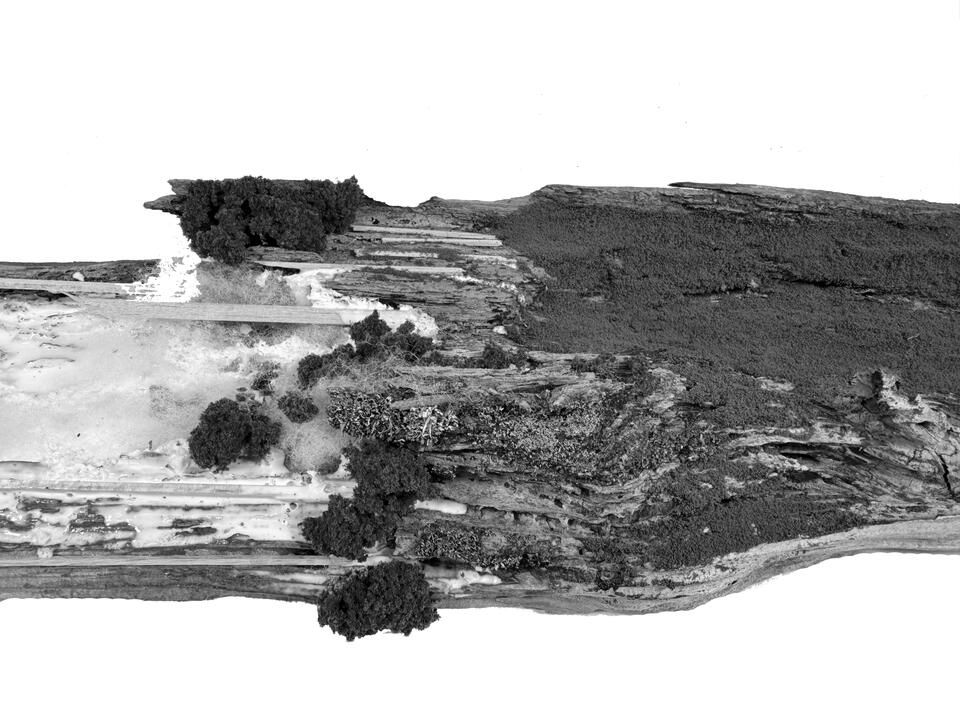Junyi Shi
Spirit of Place:
Examining Traditional Chinese Principles of Place-making in a Contemporary Urban Context
Cities are carriers of both spiritual civilization and physical space.The concept of Chinese cities has existed for about four thousand years, embodying China’s extensive cultural and philosophical heritage.Feng Shui is a specialized theory in Chinese urban planning. Therefore, discussing Chinese cities inevitably involves examining the role of Feng Shui in urban construction.
Contemporary Chinese city development has almost abandoned Feng Shui. As a result, Chinese cities have become homogenized by Western models, losing their distinctiveness and cultural expression.
This thesis project study the principles of Feng Shui It analyze why contemporary Chinese cities have lost traditional Feng Shui and the necessity of reviving Feng Shui in urban planning. By designing a test city, the project aims to establish a new Feng Shui urban design system and explore the potential value of this new system. The goal is to identify a development direction that suits the unique characteristics of Chinese cities.
Shenyang Urban Development History Summary
Image
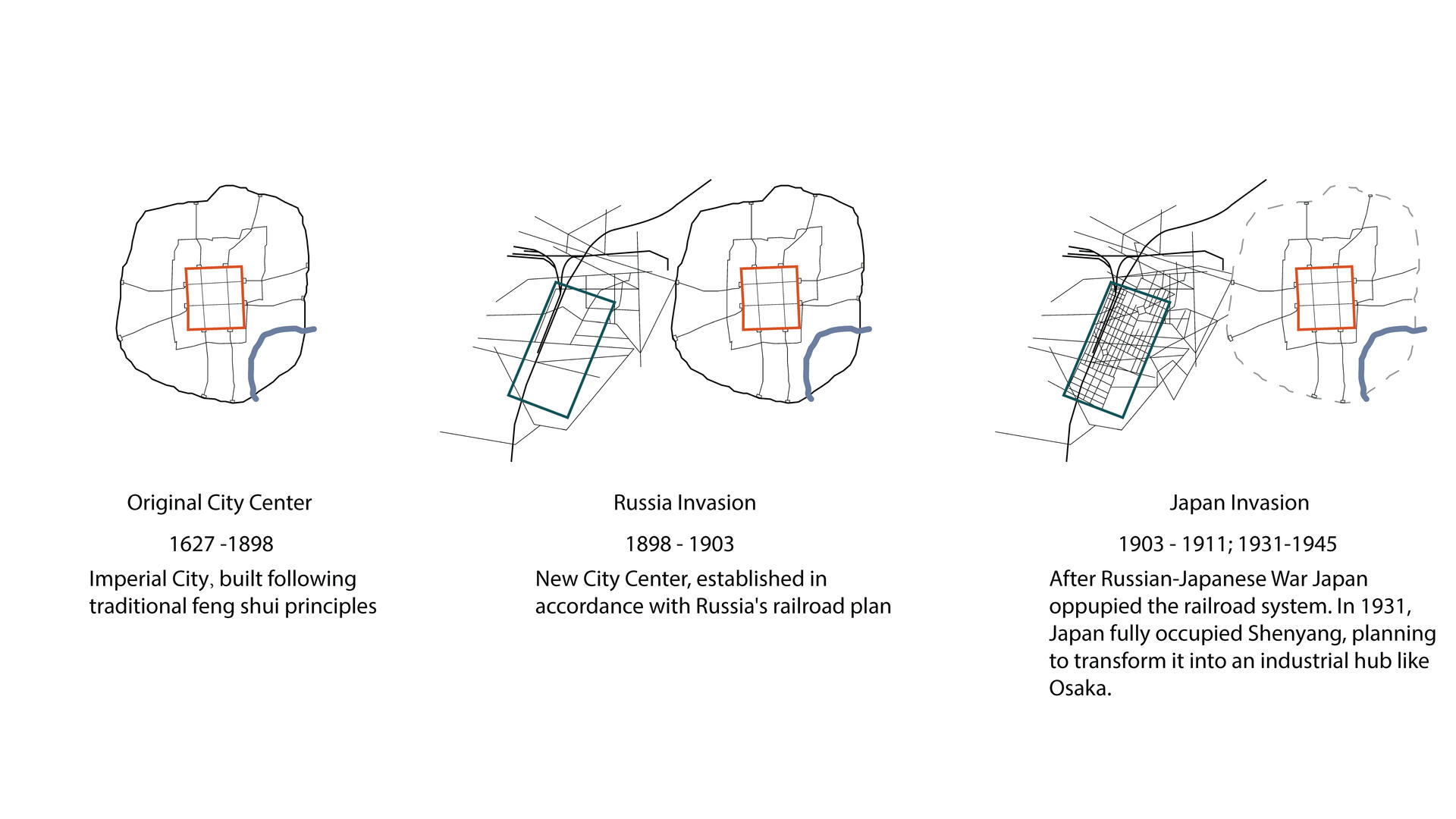
Summarize the development patterns of Shenyang's old and new city centers, and analyze the reasons and time points for the formation of the “gap”.
Shenyang Old Imperial City Center Diagram
Image

The Imperial City of Shenyang was built by the feng shui nine-grid system. The principle is to analyze the best energy storage points through Feng Shui and build the Imperial City to ensure the stability of the dynasty and the prosperity of the city.
Shenyang New City Center Diagram
Image

During the period of loss of sovereignty, the city of Shenyang has undergone many renovations. The original walls were demolished and the new center of the city was in the western part of the old Imperial City. Railroads and industry were the most significant developments in Shenyang City at that time, forcing the abandonment of the traditional urban system of Shenyang.
Shenyang Landuse Analysis
Image
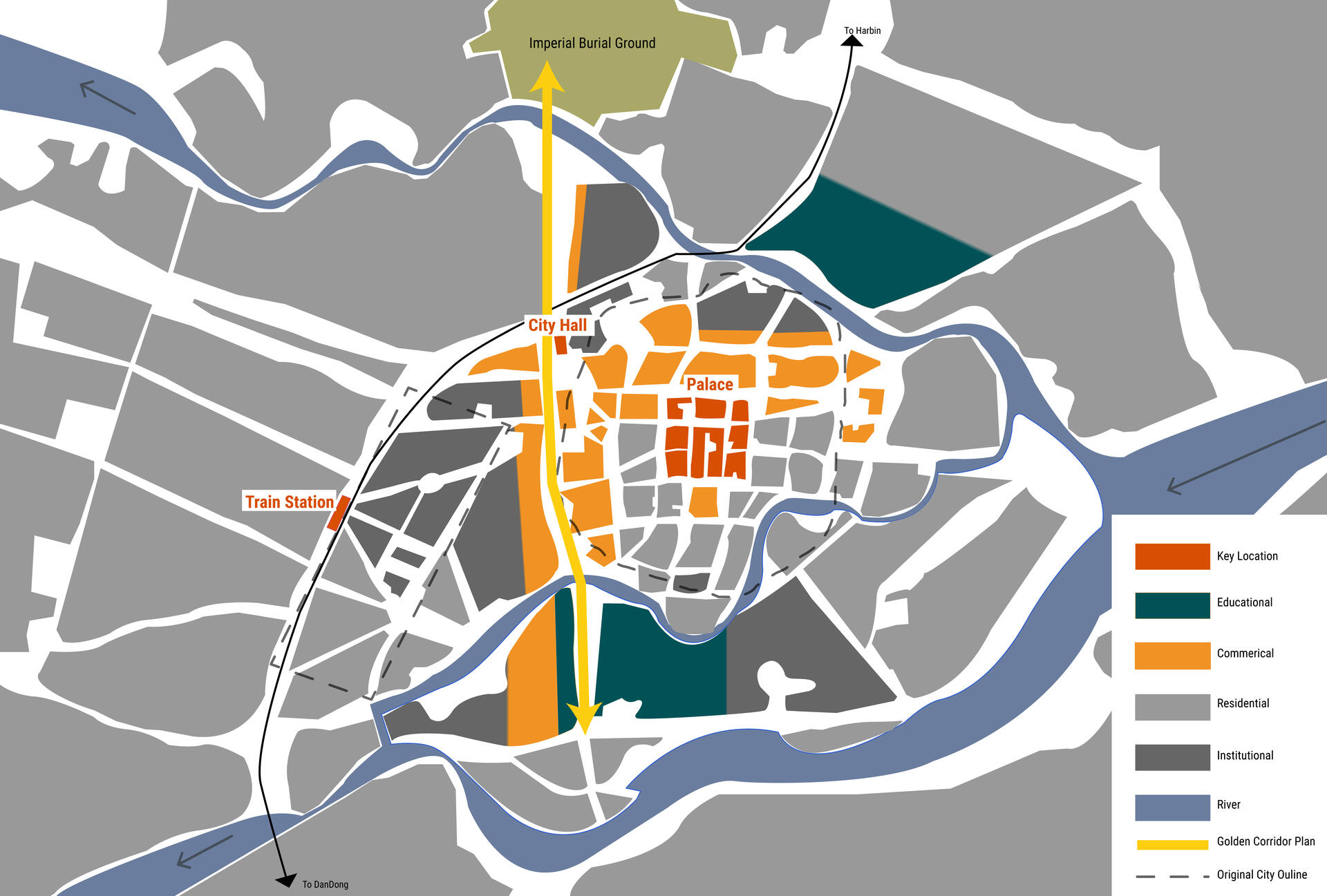
The city of Shenyang faces a "gap" between the old and new city by connecting it with business and economic investment. As can be seen on the map, this "gap"is surrounded by commercial and economic development from the Imperial buried ground in the north to the Shenyang University District in the south.
Axonometric Framework Plan
Image
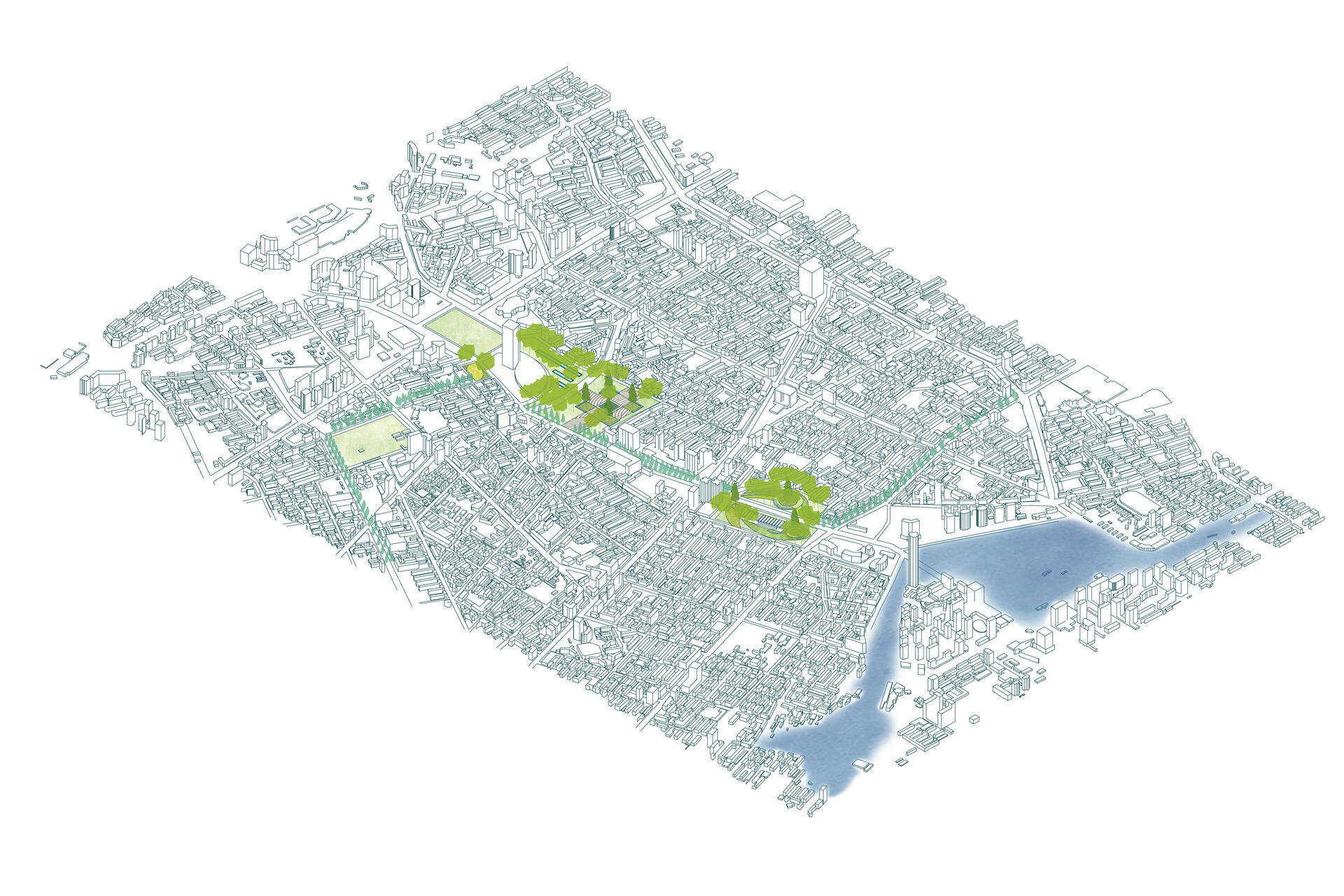
By studying Shenyang's Feng Shui and ecology, a new design system was formed. Through this new design system, Shenyang's "gap" were organically repaired to ensure the connection between the old and new city centers.
The Flowing Park
Image
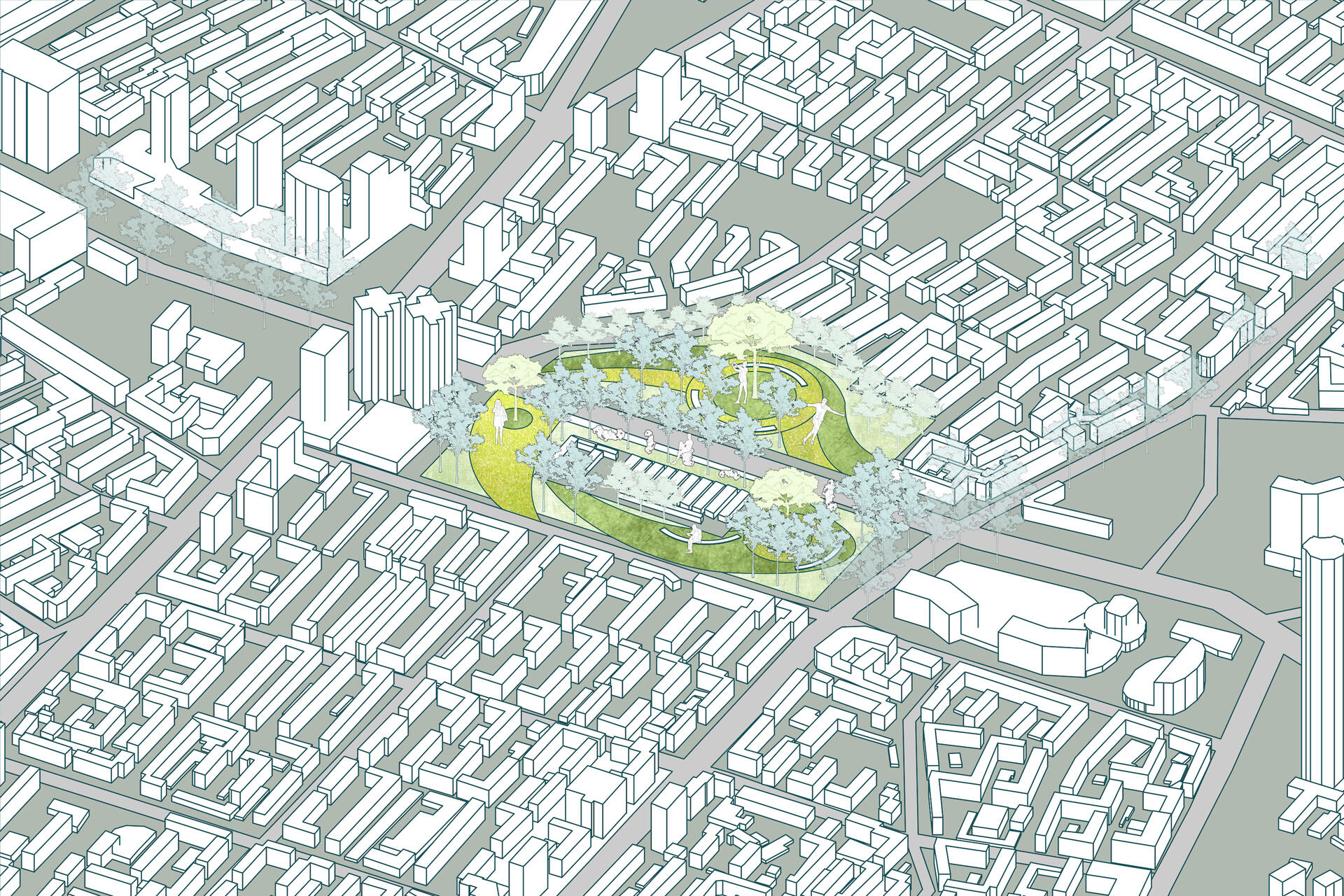
Parks designed to gather people, orienting them into another direction.
New Nine Grid Park
Image

Modeled after Imperial City's nine-grid system, creating interesting nodes that offer new experiences
Design Plan
Image
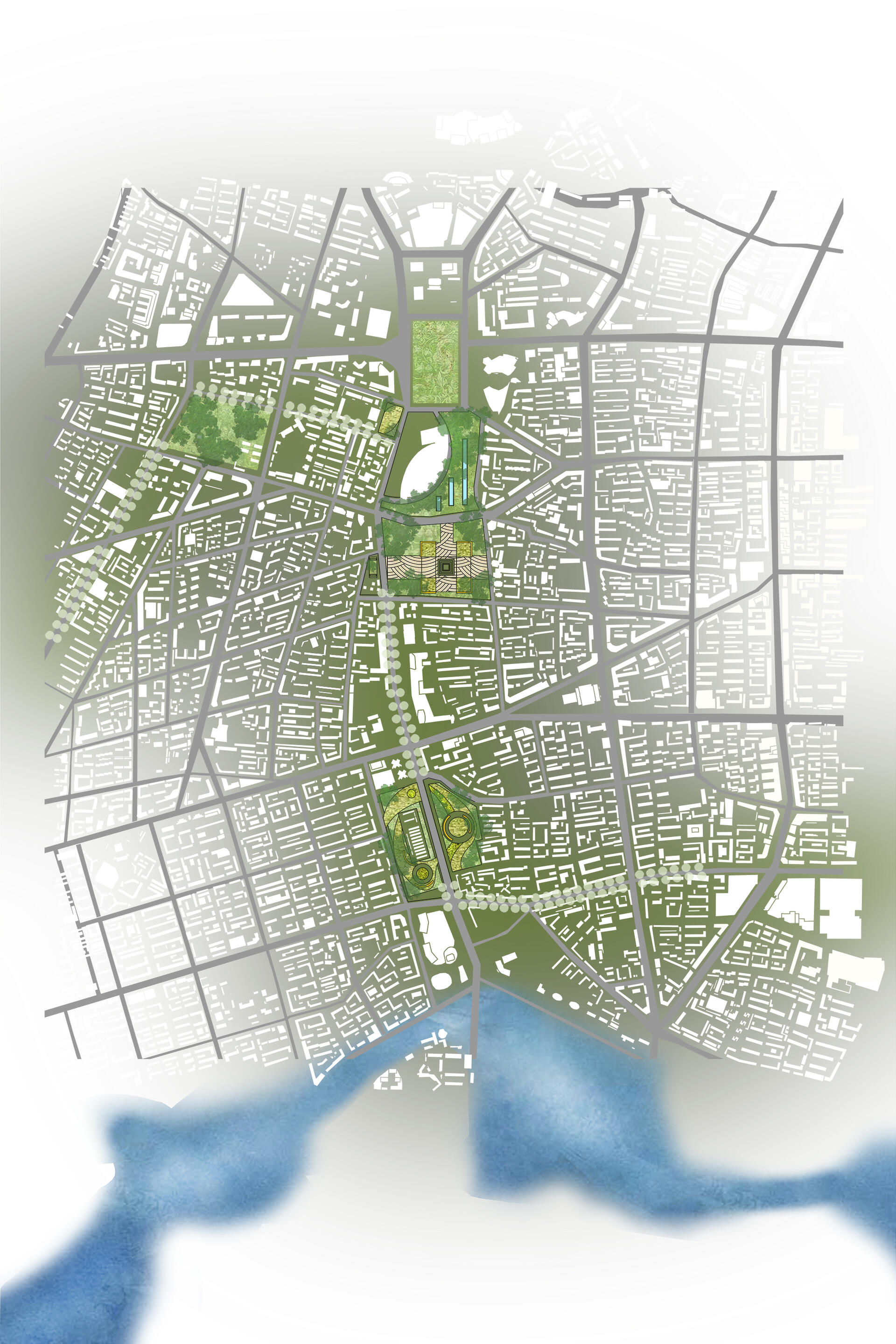
Design floor plans showing the new design system
EXHIBITION IMAGES

